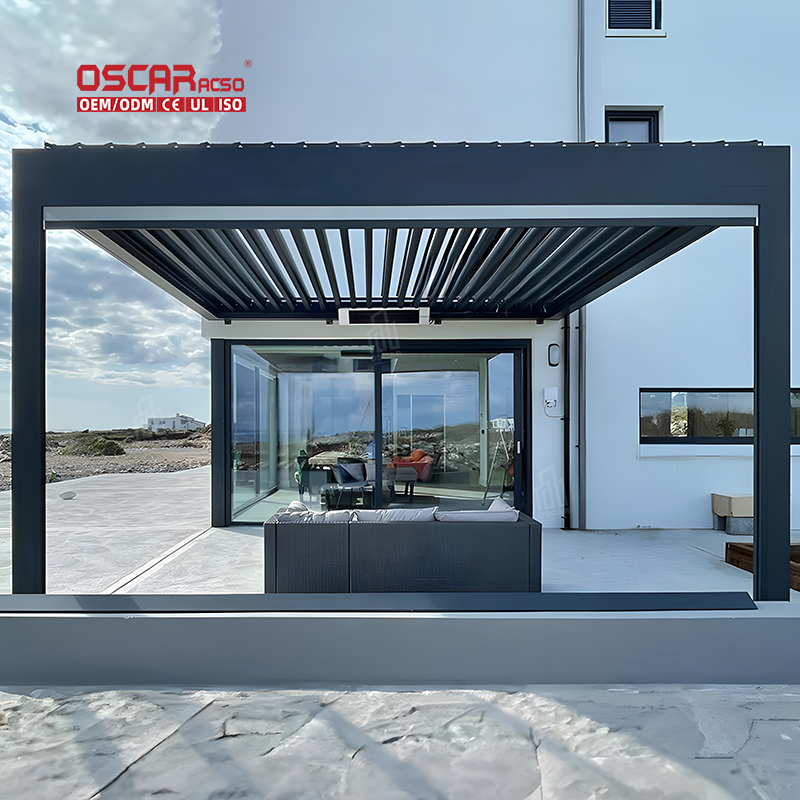Pergola Lifespan Secrets, How to Make Yours Endure for Decades
Ever wondered how long your beautiful pergola will last? 🤔 The answer isn\'t a simple number—it\'s a fascinating mix of ma...
Ever wondered how long your beautiful pergola will last? 🤔 The answer isn’t a simple number—it’s a fascinating mix of material science, environmental factors, and your own care routine. While a well-built pergola can grace your garden for 15 to 30 years or more, its true lifespan is a story written by the choices you make. Let’s unravel the mystery behind pergola longevity and discover how you can maximize your outdoor investment.

✨ Material Matters: The Foundation of Longevity
The material you choose is the single most important decision affecting your pergola’s lifespan. Each option offers a unique blend of durability, aesthetics, and maintenance needs.

- •
Wood (The Classic Beauty): Wood brings natural warmth but varies greatly in longevity.
- •
Cedar & Redwood: These premium hardwoods are naturally resistant to rot, decay, and insects thanks to their inherent oils. With proper care, they can last 15 to 30 years.
- •
Pressure-Treated Pine: A more affordable option, but softer and more susceptible to the elements. Lifespan typically ranges from 5 to 15 years and heavily depends on regular sealing and staining to prevent moisture damage and insect infestation.
- •
- •
Aluminum (The Modern Low-Maintenance Champion): This is a top choice for durability and minimal upkeep. Powder-coated aluminum pergolas are rust-resistant, lightweight, and can easily last 20 to 30 years with little more than occasional cleaning. Many come with impressive warranties backing their longevity.
.jpg)
- •
Vinyl (The Effortless Performer): If you despise maintenance, vinyl is for you. It won’t rot, fade significantly, or attract insects. A high-quality vinyl pergola can be a 25 to 30-year fixture in your garden, often requiring only a soapy water wash to look new.
⚡️ Beyond the Material: Key Factors That Dictate Durability
Your pergola’s material is just the starting point. Its actual lifespan is shaped by its battle with the elements and the support it gets from you.
- •
Climate & Weather Assault: The environment is a relentless force.
- •
Sun & Heat: Prolonged UV exposure can dry out wood, causing it to crack and splinter, and can even fade vinyl and certain coatings over time.
- •
Moisture & Humidity: This is the arch-nemesis of wood, promoting rot, mold, and mildew. In coastal areas, salt spray can accelerate corrosion on metal components.
- •
Snow & Wind: Heavy snow loads can stress any structure, while strong winds can test its structural integrity and fasteners.
- •
- •
Quality of Installation & Design: A pergola is only as strong as its foundation. Proper installation—ensuring posts are securely set and the structure is level and square—is non-negotiable. Furthermore, simpler, robust designs often withstand the test of time better than overly intricate ones that have more potential weak points.
🛠️ Maintenance: The Ultimate Lifespan Extender
Neglect is the fastest way to shorten your pergola’s life. A little regular care pays massive dividends, especially for wood structures.
- •
The Annual Check-Up: At least once a year, conduct a thorough inspection. Look for:
- •
Wood: Check for rot, insect damage, loose fasteners, and any wear in the finish (stain or sealant).

- •
Metal & Vinyl: Look for rust spots (on steel), loose connections, and any surface cracks.
- •
- •
The Cleaning Ritual: Keep it clean! Remove dirt, debris, and organic matter that can trap moisture.
- •
A gentle wash with a mild soap and water solution is usually all that’s needed.
- •
For wood, a soft brush can help remove grime from textured surfaces.
- •
- •
The Protective Shield (Crucial for Wood): Reapplying a high-quality sealant, stain, or paint every 1-3 years is the best thing you can do for a wooden pergola. This barrier repels water, blocks UV rays, and drastically slows aging.
🔍 Recognizing the Signs: When to Repair or Replace
Even with great care, everything has a lifespan. Knowing when to intervene can save you from a costly collapse or an accident.
- •
Address Repairs Promptly: Don’t ignore small issues. A loose beam, a small patch of rot, or a rusting bracket should be fixed immediately before the problem spreads and compromises the entire structure’s safety.

- •
When Replacement is the Safer Option: Consider a new pergola if you see:
- •
Extensive rot or insect damage that affects multiple key structural members.
- •
Significant warping, sagging, or instability that cannot be safely repaired.
- •
Persistent issues that make maintenance a constant, losing battle.
- •
Ultimately, your pergola’s lifespan is a partnership between its innate durability and the care you provide. Choosing the right material for your local climate and committing to simple, regular maintenance are the two most powerful levers you can pull. Your dream outdoor space isn’t just built—it’s nurtured. With attention and care, it will be a source of shade, joy, and beautiful memories for decades to come. 🌿

